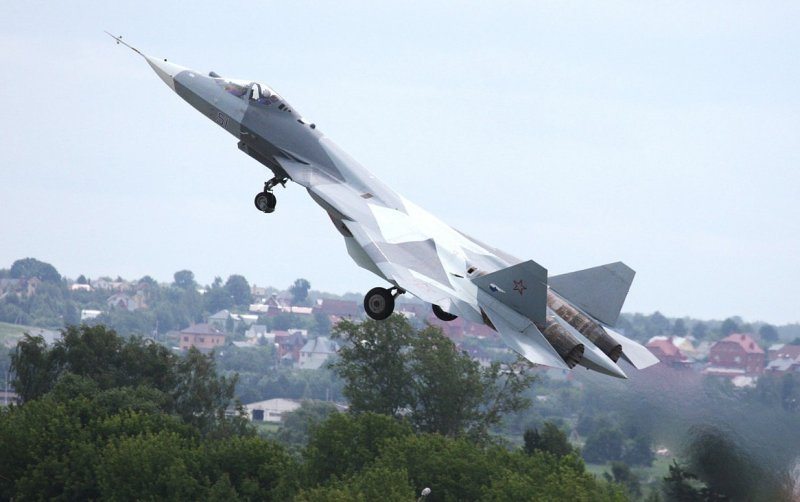A new generation prototype fighter is set to make its first public appearance at the Moscow Air Show this week.
The Sukhoi T-50 will be the jewel in the Russian Air Force’s crown. The service has relied on the Mikoyan MiG-29 and Sukhoi Su-27 family of combat aircraft as the core of its fighter force since the mid-1980s, but these aircraft are seen as approaching obsolescence.
The T-50 is Russia’s first new major combat aircraft design to fly since the end of Soviet Union. When an operational fighter based on it is put into service, possibly as soon as 2015, it will be the Russian Air Force’s first stealth aircraft, featuring low-observable technology that makes it almost impossible to detect with radar.
Like its US counterpart, the F-22 Raptor, it will be able to cruise at supersonic speeds, and be capable of pulling high-G maneuvers that older aircraft cannot match thanks to thrust-vectoring exhaust nozzles and a high-tech flight control system.
Although it looks similar to America’s stealth fighters, analysts say the aircraft is not simply a copy and shows Russia still has excellent design expertise.
“This is not ‘F-22ski’,” says Douglas Barrie, air warfare analyst at the London-based International Institute for Strategic Studies (IISS).
The T-50 made its first flight at the Komsomolsk-on-Amur factory airfield in Siberia in January, and since then two prototypes have been undergoing flight tests at the Zhukovsky flight test center near Moscow.
The T-50 is being touted in some quarters as Russia’s return to the leading edge of military aviation, but the aircraft is not yet a finished item, and Russia had to rely on outside funding to get the machine into the air.
India will pay for 35 percent of the estimated $6 billion development costs, D. Shivamurti of Hindustan Aeronautics, the Indian manufacturing partner in the project, said earlier this year.
Getting it into front-line squadrons will be the real next challenge, analysts say.
“The real issue is, has Russia got the budget to develop it and put it into service,” says Craig Hoyle, Defense Aviation Correspondent for Flight International magazine.
The big question is just how many of these super-fighters Russia can afford. The Russian Air Force has said it wants to buy around 50 to 60 initially.
“That is nowhere near enough, even with a reduced air force,” Barrie from IISS says.
Russia wants to field up to 200 aircraft eventually, but cost will be a crucial issue. Even the United States could only afford around 180 of its F-22s, which eventually cost around $140 million each, including development costs.
Just how much the T-50 could cost is not yet clear, but Mikhail Pogosyan, Sukhoi’s former chief designer and head of the United Aircraft Corporation, a holding company, says it will be cheaper than the American F-22 but more expensive than the previous generation of fighters.










